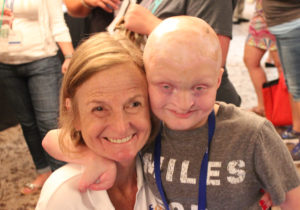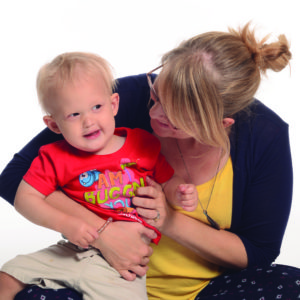Impact Cures, Now! Research Campaign
Everything we do at the National Foundation for Ectodermal Dysplasias (NFED) supports our mission: to connect and empower individuals touched by ectodermal dysplasias through education, support and research.
Why is research so important? We are committed to find treatments and ultimately find cures for all ectodermal dysplasias. If we do NOT fund this research, NO one will. The NFED will never have the millions of dollars needed to actively and fully support the research needed to find cures. But, it is our responsibility to raise funds to provide basic starter money.
Researchers interested in ectodermal dysplasias need “seed” funding so they can apply for bigger grants from the National Institutes of Health (NIH). They will never get to this next step without our help.
Together, we must raise $300,000 over the next three years to funnel money into ectodermal dysplasias research.
This is the only way we can make a significant impact on ectodermal dysplasias research.
We have decided to invest significant resources in the Research Program for the next three years. We firmly believe that now is time to boost our program. Several exciting break through projects are on the horizon. Here are just a few:
X-Linked Hypohidrotic Ectodermal Dysplasias (XLHED)
As we shared previously, in 2016, Dr. Holm Schneider, a leading expert in XLHED pediatrics in Germany, conducted the first successful administration of a protein to three babies before birth. Findings show sweat restored fully in the twins who received two doses and partially in the third baby who received one dose. They also have had no hospitalization for respiratory-related issues. They have better lower jaw bone development that should allow for successful dental work and presence of eyelid glands and eye hydration. We also remain hopeful for additional benefits as these children grow.
We are on the brink of a cure for the some of the symptoms of XLHED. It is just around the corner. Please join us to support this research and donate.

Skin Research in Ankyloblepharon-Ectodermal Defects-Cleft Lip And/Or Palate (AEC) Syndrome and Ectrodactyly-Ectodermal Dysplasia-Clefting (EEC) Syndrome
Individuals affected by AEC or EEC often develop severe skin erosions (large open wounds). We currently do not know why the skin of these individuals is so fragile. Dr. Maranke Koster’s lab is using stem cell-based models to investigate this issue. They hope that their research will lead to a new treatment for skin erosions in AEC and EEC patients.
We have to solve this horrific skin problem! Babies can die at a very early age as a result of these skin issues. It can also take years of pain and suffering for both the child and the parents to heal because there are no good treatment options.
Please join us in supporting this cutting edge and lifesaving research and donate.

Eye Issues in EEC Syndrome
Individuals affected by EEC syndrome often develop severe erosions of the cornea that can ultimately lead to blindness. The underlying reason for the erosions and the progression to blindness is completely unknown. Dr. Koster plans to use different types of stem cell-based model systems to investigate the basis of the eye issues that occur in EEC patients. We hope that her research will lead to a better understanding of these issues and ultimately to novel treatments for eye lesions in EEC patients.
We can’t continue to allow children and adults who are affected by EEC to lose their eye sight because of the severe corneal erosions. We need to find successful treatments so children can have a life time of eyesight.
Please join us to develop a treatment to restore vision and donate now.
These are just three projects but there are many, many more that we need to support. We need to look at the challenging skin lesions associated with Goltz syndrome to find treatments that work. We need to be tenacious in our efforts to find a cure for this often times devastating condition.
We need to look at all syndromes, especially those for which there are no identified genes. There are a large number of individuals who do not have a diagnosis. This can be very frustrating and hinder treatment options. It is crucial to find better diagnostic criteria and techniques.
And the list goes on and on. There are more than 180 ectodermal dysplasia syndromes. We need the key to unlock them all. One by one, step by step.
Here’s the good news. YOU can change the course of these syndromes for future generations. We are launching the “Impact Cures, Now!” Research Campaign now to raise money for all of these cutting edge projects that could change the course of these syndromes.
How you can help:
- Make a donation.
- Create a Facebook Fundraising Page.
- Call Lea at 618-566-6871 to set up a fundraising event to benefit our “Impact Cures, Now!” Research Campaign.
- Call Brittany at 618-566-6874 to write a solicitation letter to your employer or contacts to support this campaign.
